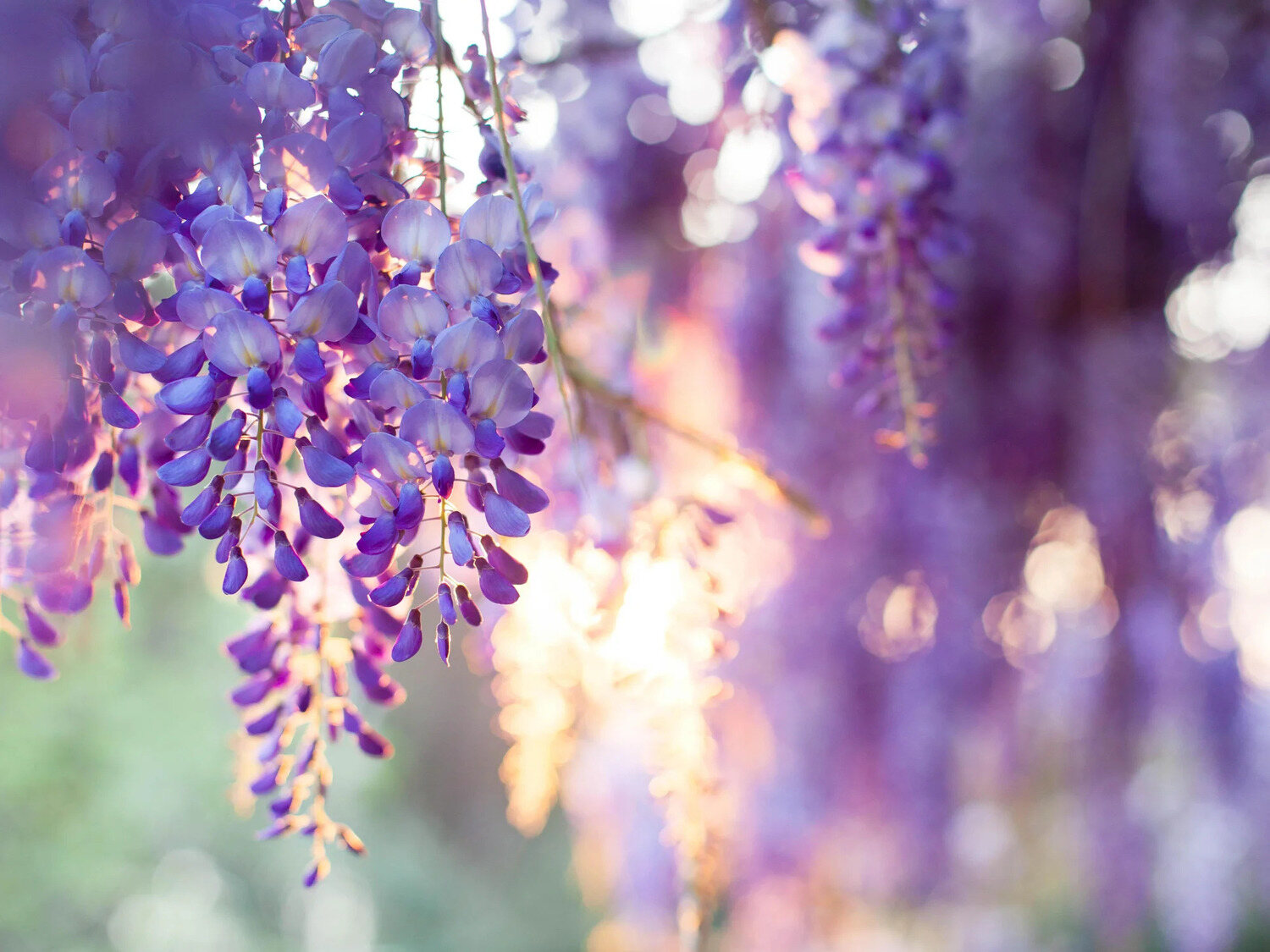
The enchanting beauty of wisteria can transform any landscape into a whimsical wonderland. With its cascading clusters of fragrant flowers and lush green foliage, wisteria has become a favorite among gardeners and nature enthusiasts worldwide. But did you know that there is more to this mesmerizing plant than meets the eye? In this article, we will delve into the world of wisteria and discover 12 unbelievable facts that will leave you awe-struck. From its fascinating history to its unique characteristics, these facts will shed light on the captivating wonders of wisteria. So buckle up and prepare to be amazed as we unravel the mysteries of this extraordinary plant.
Key Takeaways:
- Wisteria, a stunning vine with vibrant blooms, can live for over a century and comes in various colors, symbolizing love and attracting pollinators. It’s fast-growing and can be invasive if not managed properly.
- Wisteria, known for its medicinal properties, can be trained into different forms and thrives in different climates. With proper care, it can live for several decades, blooming in spring and bringing beauty to outdoor spaces.
Wisteria is a Beautiful Flowering Vine
Wisteria is a stunning flowering vine that is best known for its cascading clusters of fragrant and vibrant blooms. This woody vine belongs to the pea family and is native to Asia, particularly Japan, China, and Korea.
Wisteria Can Live for Over a Century
One of the most incredible things about wisteria is its longevity. These vines have been known to live for well over 100 years with proper care and maintenance.
Wisteria Comes in Different Colors
Although the most common color of wisteria is a beautiful shade of purple, there are also varieties that produce blooms in pink, white, and even blue hues.
Wisteria is Fast-Growing
Wisteria is renowned for its vigorous growth rate. It can climb and spread rapidly, often reaching heights of up to 30 feet in just a few years.
Wisteria Symbolizes Love and Romance
In many cultures, wisteria is associated with love, romance, and beauty. Its alluring flowers are often used in weddings and other celebrations as a symbol of everlasting love.
Wisteria Can Attract Pollinators
Wisteria flowers are not only visually captivating, but they also attract bees, butterflies, and other pollinators. This makes wisteria a valuable addition to any garden seeking to promote biodiversity.
Wisteria Can Be Grown in Different Climates
While wisteria thrives in temperate climates, there are also cold-hardy varieties that can withstand freezing temperatures. This allows gardeners in colder regions to enjoy the beauty of wisteria in their landscapes.
Wisteria Can Be Trained into Different Forms
Wisteria is incredibly versatile and can be trained to grow in various forms, such as on pergolas, arches, or trellises. With proper pruning and support, wisteria can create stunning natural archways and provide shade for outdoor spaces.
Wisteria Can Be Invasive
While wisteria is undeniably beautiful, it can also be quite invasive if not properly managed. Its rapid growth and ability to spread quickly can make it challenging to control in some cases.
Wisteria Has Medicinal Properties
Certain parts of the wisteria plant, including the flowers, bark, and leaves, have been used in traditional medicine for their potential healing properties. However, it’s important to note that wisteria should be used with caution and under the guidance of a healthcare professional.
Wisteria Can Live for Several Decades in the Right Conditions
With the right care, wisteria can live for several decades, bringing beauty and elegance to outdoor spaces for generations to come.
Wisteria Blooms in Spring
Wisteria typically blooms in the spring, adorning gardens with its spectacular and fragrant flowers. The bloom time varies depending on the species, but it is always a breathtaking sight.
These are just 12 of the many unbelievable facts about wisteria. From its captivating beauty to its symbolic meaning, wisteria is truly a remarkable flowering vine that continues to enchant gardeners and nature enthusiasts worldwide.
Conclusion
Wisteria is truly a remarkable plant with its stunning flowers, impressive growth, and fascinating characteristics. From its ability to climb walls and structures to its unique fragrance and symbolism, there are countless reasons why wisteria has captivated the hearts of gardeners and nature enthusiasts. Whether you’re looking to add a touch of elegance to your garden or simply want to appreciate the natural beauty around you, wisteria is definitely a plant worth learning more about and incorporating into your landscape. So, go ahead and embrace the magic of wisteria, and let its enchanting qualities transform your outdoor spaces into an oasis of beauty and tranquility.
FAQs
1. How fast does wisteria grow?
Wisteria is known for its rapid growth rate, and under ideal conditions, it can grow up to 10 feet in a single season.
2. Do all wisteria plants produce fragrant flowers?
No, not all wisteria plants produce fragrant flowers. The most common type, Chinese wisteria (Wisteria sinensis), produces highly fragrant flowers, while the Japanese wisteria (Wisteria floribunda) has less fragrant flowers.
3. Are there any special care requirements for wisteria?
Wisteria requires some attention and care to thrive. It needs full sun exposure, well-draining soil, regular pruning, and proper support or structure for its vines to climb on.
4. Can wisteria damage structures?
Yes, if not properly maintained and controlled, wisteria vines can grow extremely large and heavy, potentially causing damage to structures. Regular pruning and monitoring of its growth is essential to prevent any damage.
5. Is wisteria toxic to pets?
Yes, all parts of the wisteria plant, including the flowers, seeds, and pods, are toxic to pets if ingested. It is important to keep pets away from wisteria plants to avoid any potential poisoning incidents.
6. Can wisteria be grown in containers?
Yes, wisteria can be grown in containers, but it requires careful attention. The container should be large enough to accommodate the plant’s root system, and regular pruning and maintenance are necessary to control its growth.
Was this page helpful?
Our commitment to delivering trustworthy and engaging content is at the heart of what we do. Each fact on our site is contributed by real users like you, bringing a wealth of diverse insights and information. To ensure the highest standards of accuracy and reliability, our dedicated editors meticulously review each submission. This process guarantees that the facts we share are not only fascinating but also credible. Trust in our commitment to quality and authenticity as you explore and learn with us.


